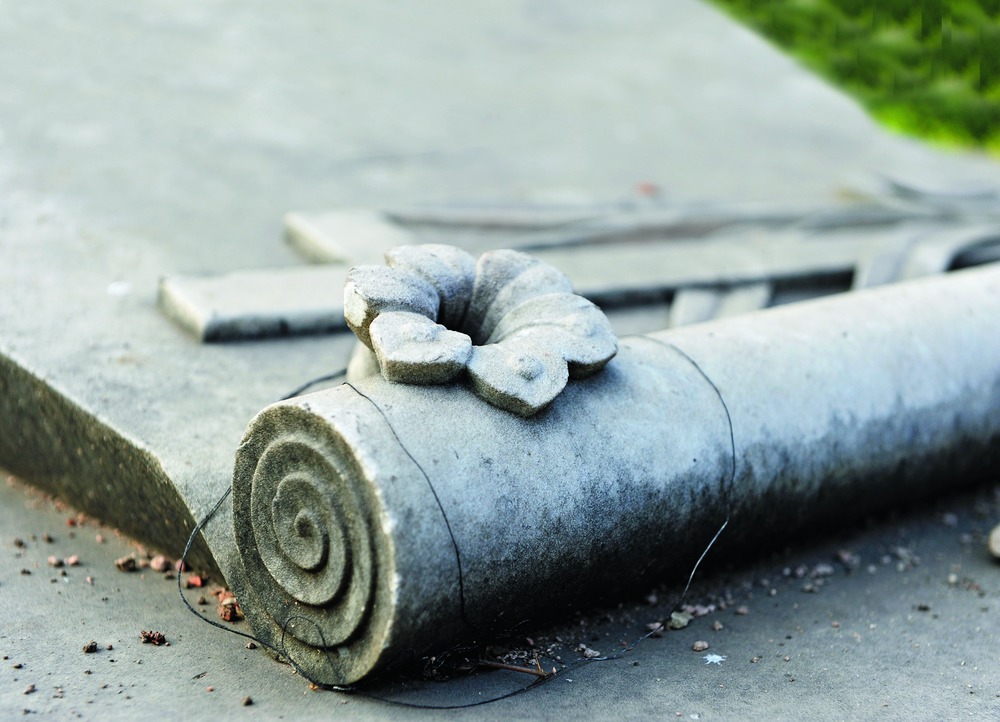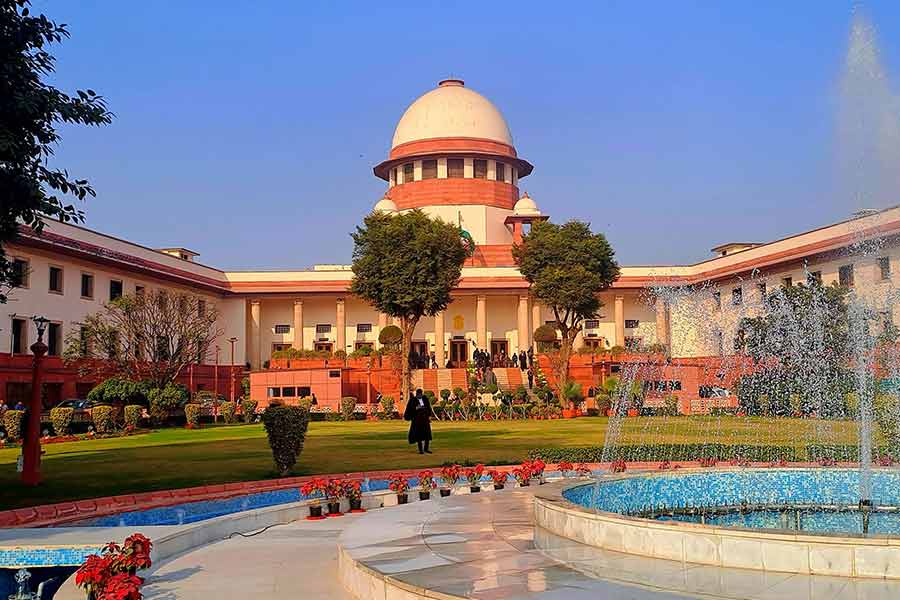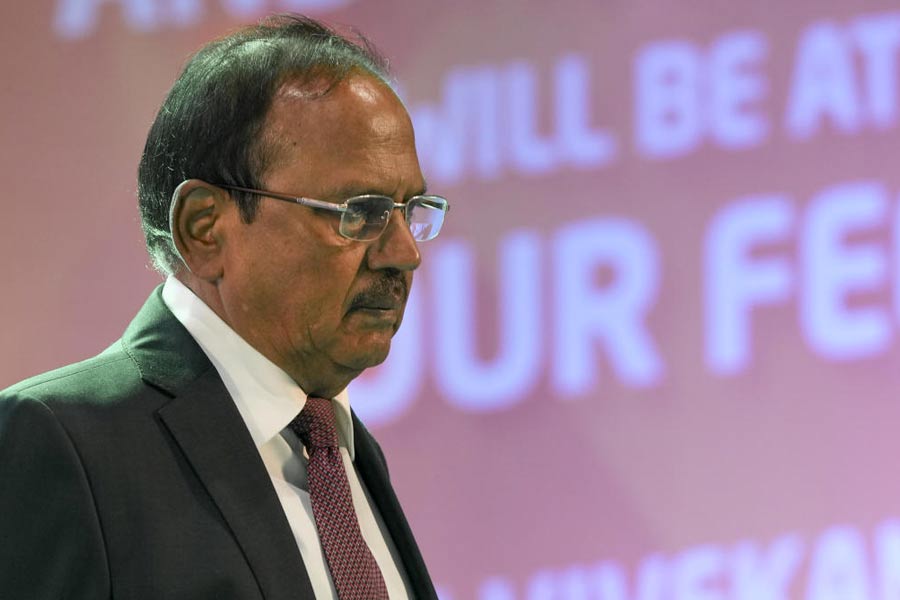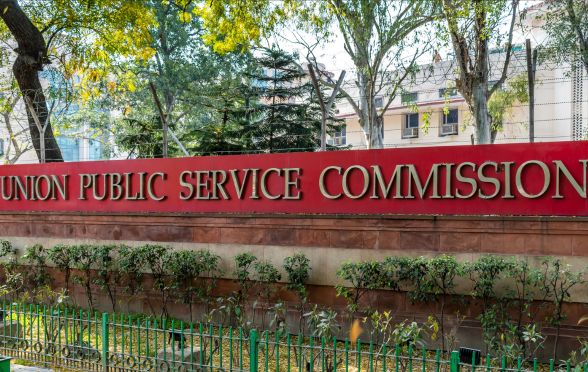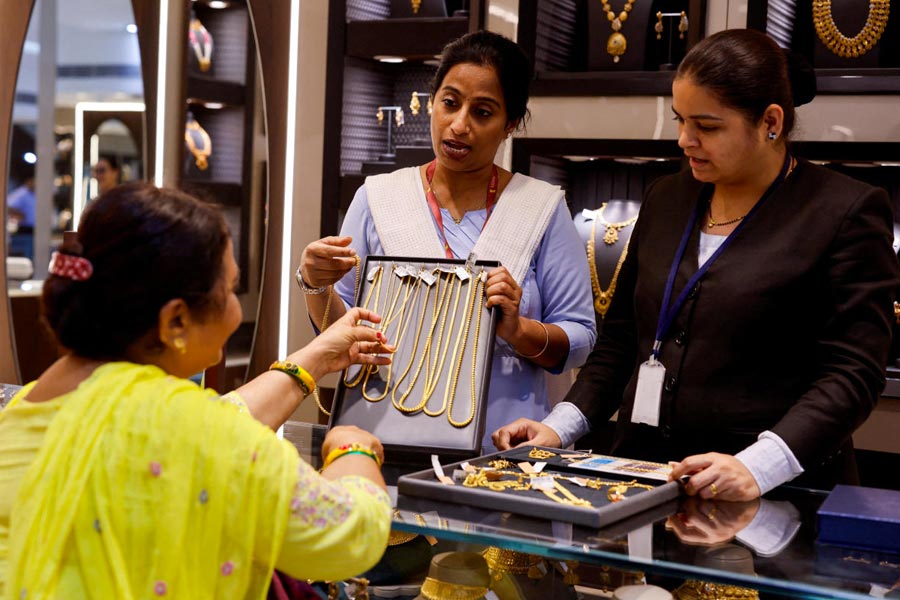
It is Eid-e-Milad. The roads around Beckbagan-Mallickbazar area are ringing with festivity. I've been looking for the Scottish Cemetery for the past half hour. Have been directed once to the South Park Street Cemetery and then the Lower Circular Road Cemetery; both times by cops, both wrongly. I consult my phone for the address - 159 B Karaya Road - seek directions afresh at a chemist's, cross the street and dip down a lane.
To my left is a huge gate. Later, I learn the original cast iron front is now the inside gate, and what's outside is a clever replica.
A little woman with an ashen face and a bad eye (from a childhood infection) unlocks the gate and lets me in. Loretta is the wife of the cemetery caretaker, Norman Hall. Norman died one sudden morning a fortnight ago, after drinking his morning cuppa and cracking his morning joke.
Loretta leads me to the "good side" of the cemetery, where restoration work is on. I cannot hear the hullabaloo from the streets anymore. The place it seems is fitted with a natural filter. Inside, labourers are hacking away at the undergrowth, clearing the junk, fixing headstones or creating new pathways. Saplings lie bunched up in places. "It's not just conservation. It's conservation and sustainable development," says Neeta Das, conservation architect and project head appointed by the Kolkata Scottish Heritage Trust (KSHT).
The Scottish Cemetery dates back to 1826. Spread over three acres there are 1,600 graves - broken, collapsed, tombstones vandalised, the lead fillings of the inscriptions gone.
As you move from grave to grave a picture emerges. You overlay it with information gleaned from the burial registers at St. Andrew's Church, BBD Bag - the owner of the cemetery - and the picture becomes clearer.

In the registers, there is mention of John Monteith, a "boot-shoe maker", Joseph Colquhoun, inspector of the government dockyard, several tea planters and employees of jute mills - Victoria, Ganges, National, Caledonian. "Most jute mills along the Hooghly were owned by the Scots," says Father Andrew Simick, the presbyter-in-charge of St. Andrew's.
The dead belonged to Calcutta of course, and also places like Chinsurah, Liverpool, Glasgow, Aberdeenshire. The causes of death - enteric fever, dysentery, "heart stroke", haemorrhage. One entry reads "tomaine poisoning", simply put, it's food poisoning.
Ian Stein is a trustee of KSHT, a registered charity of Scotland. He has a relative buried here - maternal grandmother, Mona, who was married to Sir Harold Stevens, chief secretary to the Government of Bengal in 1947. She died in 1931. Says Stein, "In 1920, they got married in Edinburgh and almost immediately sailed for India... Harold served in various districts before being posted to Calcutta."
Andrew Mackillop is senior lecturer in the department of history, University of Aberdeen. One of his areas of interest is the nature of Scottish, Irish and Welsh involvement in the East India Company. Mackillop points out that despite constituting only a slim percentage of Britain's population, Scots were over-represented in key parts of the East India Company - military, medicine and mercantile activity. "So the graveyard contains not low social class Scots, but socially aspiring 'middle class' migrants who were out in India to make as much money through the colonial economy as they could."
The Scots might have stepped out of the comfort of their home in pursuit of fortune, but they needed the comfort of faith. And so, Scottish churches came up in India and with them came the graveyards in the late 1810s and 1830s.
"Bear in mind that most of these people would have intended to return home with sufficient money... But death rates were very high. Around 45-57 per cent of the migrants died," says Mackillop. Even those who survived did not stay on post-1947. "By the 1970s there were no Scots left in the city," says Charles J. Nyss, clerk to the Deacons' Court.
With the Scots gone, the cemetery fell into disarray. The land was "over fertile" and despite efforts to control it, the vegetation ran wild. Every monsoon there was waterlogging. Over time, these graves became forgotten, separated from the local populace by time, context, genealogy and faith, and slowly forsaken for lack of interest. Anti-socials became a tad interested. By the turn of the century, the Scottish Cemetery was a thieves' den. Stolen refrigerators, tram tracks, manhole covers would be dumped here, taken apart and smuggled out.

And then the wheels started to turn once again. In 2008, KSHT was set up with Lord Charles Bruce as its chairperson. Lord Bruce, a Scotsman, has a strong India connect - great-grandfather Victor Bruce, 9th Earl of Elgin, and his father, James Bruce, 8th Earl of Elgin, both were known as Lord Elgin and both were viceroys to India. "I approached the task for several reasons," says Lord Bruce, "I am deeply interested in the history of the Scottish diaspora; I have an understanding of urban conservation and I am fascinated by the challenge of regenerating a historic site in the heart of an Indian megacity."
As KSHT evolved its scope, its list of stakeholders altered. In 2012, Das was appointed. The brick-and-mortar work continued, but for every step forward, there were 10 in reverse. If you installed lights, they would be stolen. Building materials, stolen. Saplings - gone, poof.
When Das met Ishita Majumdar of NGO Banipur Sahayog socially, she mentioned the hopeless circumstances. The conversation resulted in Das commissioning a baseline survey of the area to the NGO. That was 2014. Those findings became the foundation on which the old-new cemetery would come to stand.
"The locals used to perceive the cemetery as ' bideshider jaiga (a foreign place)'. There was a sense of rejection," says Majumdar. They had their own worries. "The locality is slum-like. Most of the men are employed in the garages that line the streets. The same garages afford ready employment, easy money to teenaged boys. The mothers worry their children will end up drug addicts."
In the meantime, efforts to "green up" the cemetery were finally showing. Rows of joyous yellow Lantana camara had begun to form crosses. Purple bougainvilleas embroidered the corner graves. Palms of different varieties sprang. "All easy to maintain, pleasing to the eye, fragrant," says Biswajit Ghosh of the Agri-Horticultural Society of India, one of the consultants.
Seizing the opportunity and acting on the survey, KSHT opened the cemetery gates to the local children. Drawing classes. A book club. Skill development programmes for the mothers.
The Scottish Cemetery also attracts those hunting for roots. Catriona Stirling, a resident of Edinburgh, visited recently. Stirling's mother was always told that her grandmother was the daughter of an Indian sea captain. But Stirling discovered that her great-great-grandfather, John Thomson, had helped with the building and then the running of the Copper Mint on the Strand (in Calcutta) in the 1860s.
John and Isabella had three children. John died in 1869 of "accidental injuries". Stirling suspected so did the youngest boy, Robert, as he wasn't with his mother and siblings in the 1871 census back in Scotland. She wrote to KSHT and they confirmed that both were buried in Calcutta.
And so too, many others from the faraway isles in the North Sea. The dead in the Scottish cemetery are finally catching up on some quality sleep under the shade of the tal, supuri and areca palm; those living around it discover bonds, old and new, and new purposes and new ways of life.
A new narrative of belonging is taking shape.
Where they also lie
South Park Street Cemetery,Calcutta
Opened in 1767 even before such cemeteries were set up in England. Contains graves of Robert Kyd, founder of the Botanical Gardens and Sir William Jones, founder of the Royal Asiatic Society of Bengal
Nicholson Cemetery, Delhi
Brigadier-general Nicholson who died leading the 1857 assault on Delhi lies here
British Cemetery, Mirzapur
Lies below Chunar fort. Chunar was an ‘invalid’ station where East India Company’s non-commissioned officers and privates who married ‘native women’ could retire instead of returning to England
Kacheri Cemetery, Kanpur
Set up after 1765, when the first European troops arrived following a treaty with the Nawab of Oudh. Graves of soldiers, civil servants, traders and merchants
St. Mary’s Cemetery, Chennai
Cemetery of the first English church in India (1678-80). Grave of the pioneering botanist and doctor James Anderson
St. John in the Wilderness, Dharamshala
Anglican church built in 1852. James Bruce, the 8th Earl of Elgin, is buried here. He died of a heart attack while journeying from Shimla to Lahore soon after assuming office as India’s first viceroy
Source: British Association for Cemeteries in South Asia

